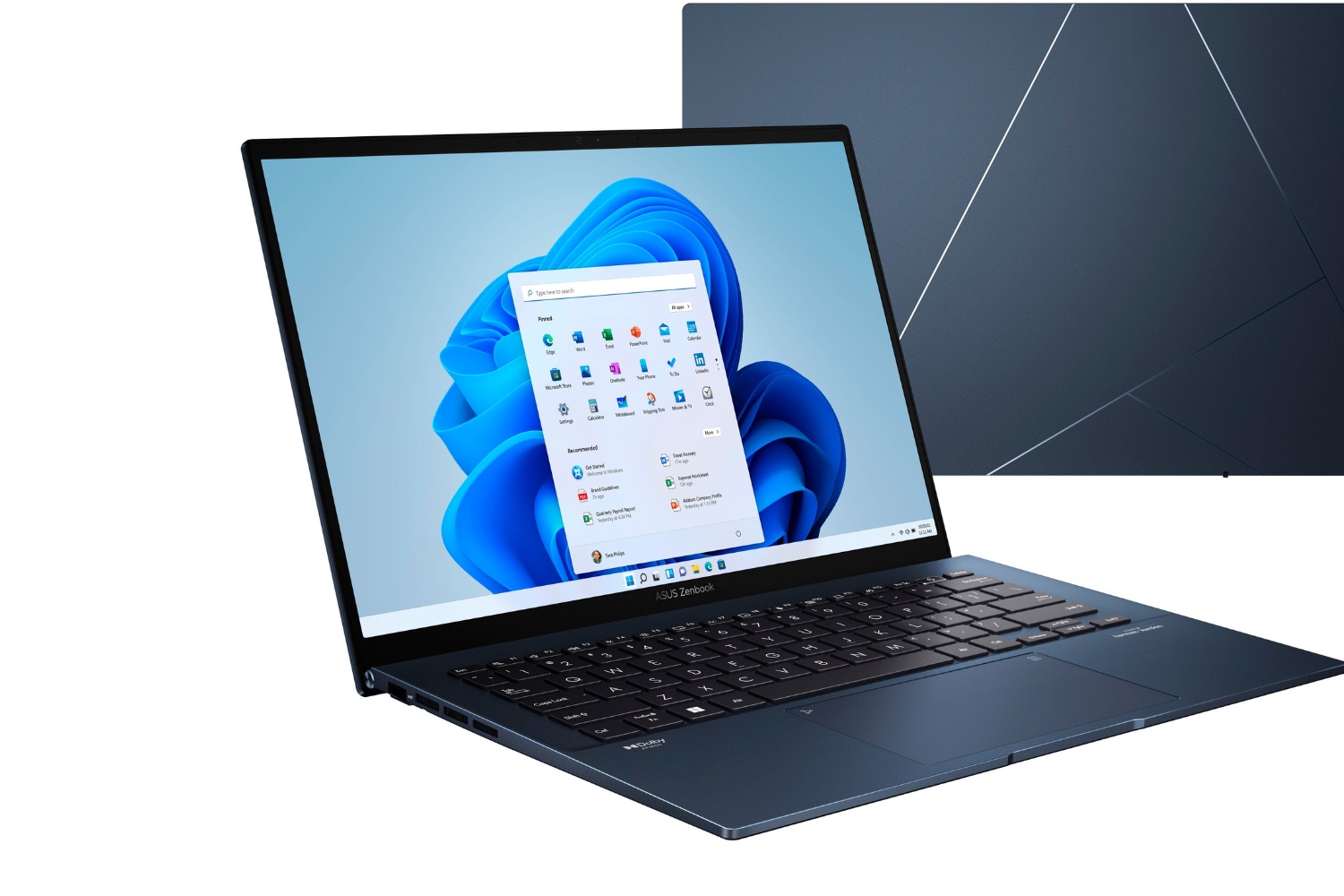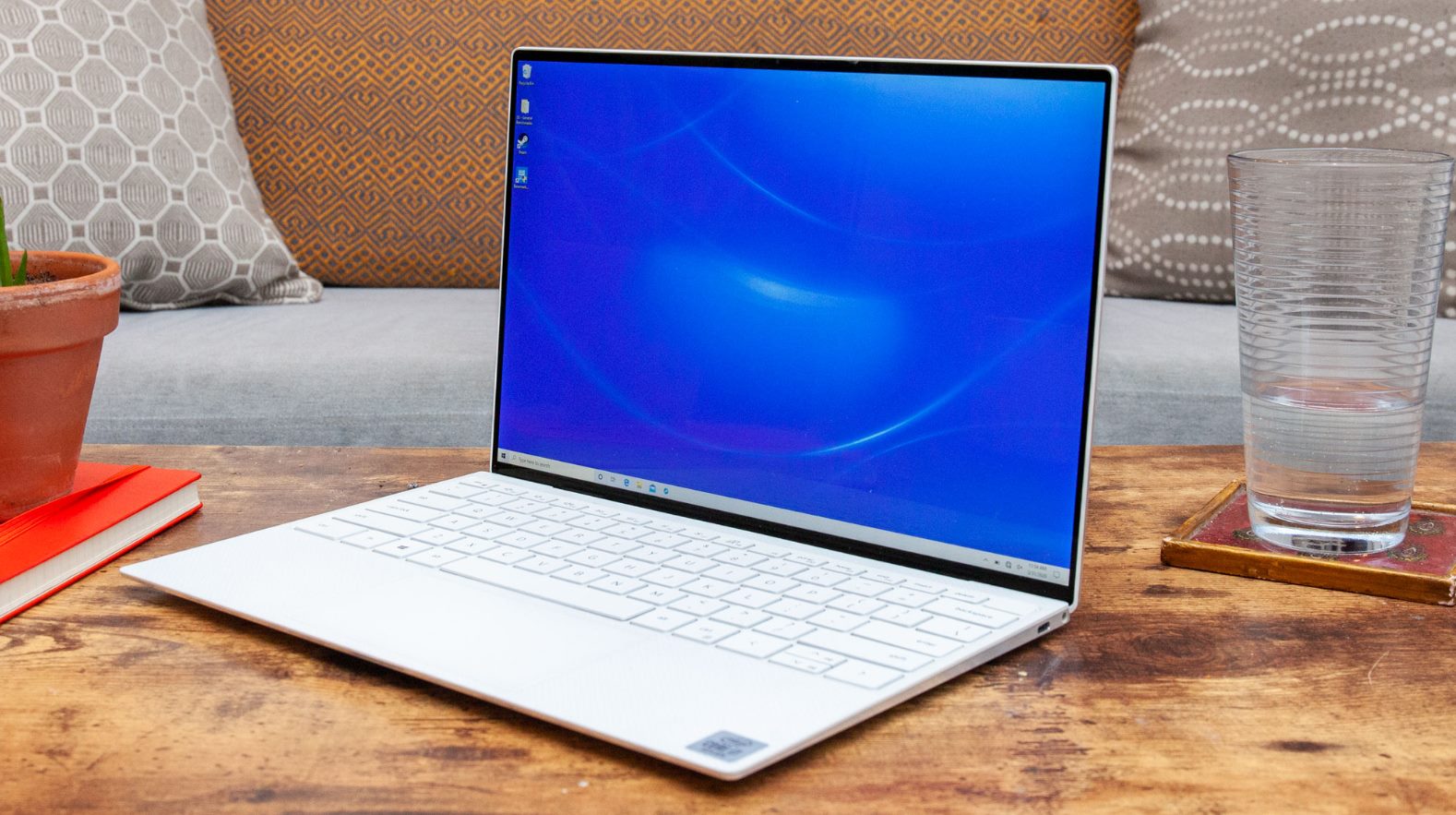Introduction
Welcome! If you’re looking to give your ASUS Ultrabook Core i5 a performance boost, you’ve come to the right place. In this guide, we’ll explore various upgrade options that can help you maximize the potential of your laptop. Whether you need more speed, storage capacity, or better graphics capabilities, we’ll show you how to make the most out of your Ultrabook.
ASUS Ultrabooks are known for their sleek designs, lightweight construction, and remarkable performance. However, over time, you may find that your Ultrabook is struggling to keep up with the demands of modern software and applications. Upgrading key components can breathe new life into your laptop and ensure it remains a reliable companion for both work and play.
Before diving into the world of upgrades, it’s important to assess your current ASUS Ultrabook. Take note of its specifications, including the amount of RAM, storage capacity, graphics capabilities, and battery life. These details will help you determine which areas need improvement and guide your upgrade decisions.
Remember, upgrading your ASUS Ultrabook requires technical knowledge and careful consideration. If you’re not comfortable performing these upgrades yourself, seek the assistance of a professional technician. With that being said, let’s explore some of the exciting upgrade options available for your ASUS Ultrabook Core i5.
Assessing your ASUS Ultrabook
Before embarking on any upgrade journey, it’s crucial to thoroughly assess your ASUS Ultrabook to determine its current strengths and weaknesses. This evaluation will help you pinpoint areas that require improvement and enable you to make informed decisions regarding your upgrades. Here are a few key aspects to consider:
- RAM: Check the amount of RAM installed on your Ultrabook. If you frequently multitask or work with memory-intensive applications like video editing software or virtual machines, you might benefit from upgrading to a higher RAM capacity. More RAM will allow your Ultrabook to handle multiple tasks simultaneously, resulting in improved performance and responsiveness.
- Storage: Evaluate the storage capacity and type of storage included in your Ultrabook. If you find yourself constantly running out of space due to large files, photos, or videos, consider upgrading to a higher-capacity solid-state drive (SSD). SSDs offer faster data access speeds, shorter boot times, and improved overall system performance compared to traditional hard disk drives (HDDs).
- Graphics Card: Assess the graphics capabilities of your Ultrabook. If you’re an avid gamer or frequently work with graphic-intensive applications, you may want to upgrade to a dedicated graphics card. A powerful graphics card will enhance your gaming experience and allow for smoother rendering of high-resolution graphics.
- Battery Life: Evaluate the current state of your Ultrabook’s battery life. If you find that your battery drains quickly or no longer holds a charge, it may be time to replace it. Opting for a higher-capacity battery or a replacement battery from the manufacturer can help extend your Ultrabook’s battery life and provide you with more hours of uninterrupted use.
- Operating System: Consider the operating system running on your Ultrabook. If you’re using an older version, upgrading to the latest operating system version can bring numerous benefits, including improved security, enhanced features, and better compatibility with newer applications.
By thoroughly assessing these aspects, you can identify the specific areas that require upgrades for your ASUS Ultrabook. It’s important to prioritize the upgrades based on your usage patterns and requirements. Keep in mind that while some upgrades can be easily accomplished, others may require professional assistance. Now that we have assessed your Ultrabook, let’s delve into the various upgrade options available to improve its performance and capabilities.
Upgrading RAM
If you frequently find your ASUS Ultrabook struggling with multitasking or running memory-intensive applications, upgrading the RAM (Random Access Memory) can significantly improve its performance and responsiveness. RAM acts as temporary storage for data that your computer needs to access quickly, and having insufficient RAM can cause your Ultrabook to slow down and become sluggish.
To upgrade the RAM in your ASUS Ultrabook, you’ll need to determine the maximum amount of RAM it can support and purchase compatible RAM modules. Start by checking your Ultrabook’s user manual or specifications online to find the supported RAM capacity and type. It’s important to purchase RAM modules that match the specifications to ensure compatibility.
Once you have the appropriate RAM modules, follow these steps to upgrade your ASUS Ultrabook’s RAM:
- Power off your Ultrabook: Shut down your Ultrabook and disconnect it from any power source.
- Locate the RAM slots: Most Ultrabooks have easily accessible RAM slots located on the bottom or side of the device. Consult your user manual or online resources for the specific location of the RAM slots in your model.
- Open the RAM slot cover: If there is a cover over the RAM slots, carefully remove it using a small screwdriver or the provided latch mechanism.
- Insert the new RAM modules: Gently align the notches on the RAM module with the corresponding slot on the motherboard and insert the module at a slight angle. Press it down firmly until it clicks into place. Repeat this step for each RAM module you are installing.
- Replace the RAM slot cover: If you removed a cover in step 3, securely reattach it to protect the RAM modules.
- Power on your Ultrabook: Once the RAM modules are installed, reconnect the power source and turn on your Ultrabook. The system should recognize the new RAM and adjust accordingly.
Upgrading the RAM in your ASUS Ultrabook can provide a noticeable boost in performance, allowing you to run more applications simultaneously and improve overall multitasking capabilities. With increased RAM, you’ll experience smoother performance, faster data access, and reduced lag during resource-demanding tasks.
However, keep in mind that upgrading RAM alone will not make your Ultrabook faster if other components, such as the processor or graphics card, are limiting performance. It’s important to consider your specific computing needs and assess whether upgrading the RAM will address the performance issues you’re facing.
Upgrading Storage
If you find that your ASUS Ultrabook is constantly running out of storage space or experiencing slow read and write speeds, upgrading the storage can be a game-changer. By replacing your current storage with a faster and higher-capacity option, such as a solid-state drive (SSD), you can significantly improve the overall performance and responsiveness of your Ultrabook.
Before starting the upgrade process, you’ll need to decide on the type and capacity of the new storage device. SSDs are recommended for their faster data access speeds and improved durability compared to traditional hard disk drives (HDDs). Determine the maximum storage capacity your Ultrabook supports and choose a compatible SSD based on your budget and storage needs.
Here’s a step-by-step guide to upgrading the storage in your ASUS Ultrabook:
- Power off your Ultrabook: Shut down your Ultrabook and unplug it from any power source.
- Locate the storage compartment: Most ASUS Ultrabooks have a dedicated compartment for storage, usually located on the bottom or side of the device. Consult your user manual or online resources to find the specific location for your model.
- Remove the existing storage device: Depending on your Ultrabook’s design, you may need to remove a cover or unscrew a panel to access the storage compartment. Carefully disconnect the cables or connectors from the current storage device and gently remove it from the slot.
- Install the new storage device: Take the new SSD and align it with the slot in the storage compartment. Gently insert it at a slight angle and press it firmly until it is securely in place. Reconnect any cables or connectors that were previously attached to the old storage device.
- Replace the storage compartment cover: If you removed a cover or panel to access the storage compartment, securely reattach it to protect the new storage device.
- Power on your Ultrabook: Once the new storage device is installed, plug in your Ultrabook and power it on. The system should recognize the new storage and adjust accordingly.
Upgrading to an SSD offers several benefits, including faster boot times, quicker application loading, and improved overall system responsiveness. With an SSD, you’ll experience reduced file transfer times and smoother performance even when working with large files or running resource-intensive applications.
Remember to back up your data before proceeding with the storage upgrade, as the process will involve replacing the current storage device. This ensures that you don’t lose any important files or documents during the transition.
Upgrading the storage in your ASUS Ultrabook can give it a new lease on life, providing you with ample space and improved performance for all your storage needs. Whether you’re a creative professional dealing with large media files or a heavy user with a vast digital library, upgrading the storage is a worthwhile investment that will enhance the overall usability of your Ultrabook.
Upgrading the Graphics Card
If you’re an avid gamer, a graphic designer, or someone who relies on their ASUS Ultrabook for intensive graphical tasks, upgrading the graphics card can greatly enhance your overall computing experience. A more powerful graphics card can handle complex visuals, provide smoother gameplay, and improve the rendering of high-resolution images and videos.
It’s important to note that not all Ultrabooks allow for graphics card upgrades, as many have integrated graphics processors that are soldered onto the motherboard. However, if your Ultrabook has a dedicated or removable graphics card, upgrading it can be a viable option.
Here’s a general guide to upgrading the graphics card in your ASUS Ultrabook:
- Check compatibility: Ensure that the graphics card you plan to upgrade to is compatible with your Ultrabook by checking its specifications and requirements. Consider factors such as power consumption, physical size, and compatibility with the existing hardware.
- Prepare your Ultrabook: Shut down your Ultrabook and unplug it from any power source. Remove the battery if possible.
- Access the graphics card slot: Locate the slot where the graphics card is installed. Refer to your user manual or online resources to find the exact location, as it may vary depending on your Ultrabook model.
- Remove the existing graphics card: Depending on your Ultrabook’s design, you may need to remove a cover or unscrew a panel to access the graphics card slot. Carefully disconnect any connectors or cables attached to the current graphics card and gently remove it from the slot.
- Install the new graphics card: Take the new graphics card and align it with the slot in the same orientation as the previous card. Gently insert it and press it down firmly to ensure proper seating.
- Reassemble and test: Secure any removed covers or panels, reconnect any connectors or cables, and reattach the battery if applicable. Plug in your Ultrabook and power it on to ensure that the new graphics card is recognized and functioning correctly.
Upgrading the graphics card in your ASUS Ultrabook can unlock stunning visual performance and provide a significant boost to demanding tasks such as gaming, video editing, and 3D rendering. The improved graphics capabilities will allow you to enjoy smoother gameplay, better image quality, and increased productivity when working with graphic-intensive applications.
It’s important to research and choose a graphics card that meets your specific needs and budget. Consider factors such as the GPU (Graphics Processing Unit), VRAM (Video Random Access Memory), and compatibility with the software and games you plan to run on your Ultrabook.
Keep in mind that upgrading the graphics card may require advanced technical skills and knowledge. If you’re unsure or uncomfortable with performing the upgrade yourself, it’s best to seek the assistance of a qualified technician to ensure a successful installation without damaging your Ultrabook.
Upgrading the Battery
If you find that your ASUS Ultrabook’s battery life has significantly decreased over time or no longer holds a charge, upgrading the battery can restore the mobility and usability of your device. A longer-lasting and higher-capacity battery will enable you to work or play on the go without constantly worrying about finding a power outlet.
Before purchasing a new battery, make sure to check your Ultrabook’s model and specifications to ensure compatibility. Look for a battery that matches the voltage, capacity, and connector type of your current battery. It’s also a good idea to read user reviews and compare different options to find a reliable and high-quality replacement battery.
Here’s a step-by-step guide to upgrading the battery in your ASUS Ultrabook:
- Power off your Ultrabook: Make sure to shut down your Ultrabook and disconnect it from any power source.
- Locate the battery compartment: ASUS Ultrabooks usually have a designated battery compartment on the bottom of the device. Consult your user manual or online resources to find the exact location for your model.
- Remove the old battery: Open the battery compartment and carefully disconnect the cable or release any latches securing the battery. Gently remove the old battery from its slot.
- Insert the new battery: Take the new battery and align it with the slot in the same orientation as the previous battery. Carefully insert it, ensuring that the connectors are properly seated.
- Secure the battery: Once the new battery is properly inserted, secure it in place using any latches or clips provided. Ensure that it is firmly attached to avoid any shifting or loose connections.
- Close the battery compartment: If the battery compartment has a cover, reattach it to protect the battery. Make sure it is securely closed.
After upgrading the battery, it’s recommended to fully charge it before using your Ultrabook. Follow the manufacturer’s instructions for proper charging and calibration procedures to maximize the battery’s performance and lifespan.
With a new battery, you can enjoy longer periods of usage without the need for frequent charging. This means increased productivity and convenience, whether you’re working remotely, traveling, or simply using your Ultrabook away from a power source.
It’s worth noting that battery life can still be affected by other factors, such as the energy efficiency of your Ultrabook’s components, screen brightness, and software settings. Optimizing these settings can further enhance your battery life and ensure efficient power consumption.
If you’re unsure about the battery replacement process or encounter any difficulties during the upgrade, it’s recommended to seek assistance from a professional technician or contact ASUS customer support for guidance.
Upgrading the Operating System
Upgrading the operating system (OS) on your ASUS Ultrabook can bring a host of benefits, including improved security, enhanced features, and better compatibility with the latest software and applications. If you’re using an older version of the OS, upgrading can breathe new life into your device and ensure you have access to the latest advancements in technology.
Before upgrading, it’s essential to check the system requirements and compatibility of the new operating system with your Ultrabook. Ensure that your device meets the minimum specifications and that all necessary drivers and software are available for the new OS version.
Here’s a general guide to upgrading your operating system:
- Backup your data: Before proceeding with any upgrade, it’s crucial to back up your important files and data. This ensures that you don’t lose any data during the installation process.
- Check for system compatibility: Verify that your ASUS Ultrabook can support the new operating system. Visit the official ASUS website or consult the user manual to find out if your device meets the requirements for the desired OS.
- Download the new operating system: Once you’ve determined compatibility, download the new operating system onto your Ultrabook. Ensure the download is from a trusted source.
- Prepare for installation: Close any open applications or programs and disable any antivirus or security software temporarily. It’s also recommended to connect your Ultrabook to a power source to prevent any interruptions during the installation process.
- Run the installation: Follow the on-screen instructions provided by the installer to begin the operating system upgrade. Make sure to carefully read and understand each step before proceeding.
- Keep your Ultrabook up to date: Once the installation is complete, ensure that your ASUS Ultrabook is always up to date with the latest OS updates and security patches. Regularly check for updates and install them as they become available.
Upgrading the operating system on your ASUS Ultrabook can provide a fresh and optimized user experience. You’ll have access to new features, improved performance, and better compatibility with the latest software and applications. Additionally, newer operating systems often include enhanced security features, protecting you against modern threats and vulnerabilities.
Remember, before upgrading, it’s essential to research and understand the changes and potential impacts the new operating system will have on your system. Some applications or hardware may require specific updates or drivers to work properly after the upgrade. Checking compatibility and updating drivers and software accordingly will help minimize any compatibility issues that may arise.
If you’re unsure about the upgrade process or encounter any difficulties, consider consulting ASUS customer support or seeking the assistance of a professional technician to ensure a smooth transition to the new operating system.
Upgrading the Display
The display is one of the most crucial components of any laptop, influencing the visual quality and overall user experience. Upgrading the display of your ASUS Ultrabook can enhance the clarity, color accuracy, and viewing angles, making it a worthwhile investment for those who prioritize visual excellence.
Before considering a display upgrade, it’s essential to assess the capabilities of your current display. Determine the display technology, resolution, and size of your Ultrabook’s screen. Research the compatibility and available upgrade options for your specific model.
Here are some factors to consider when upgrading the display:
- Resolution: Consider the resolution of your current display and determine if you’d like to upgrade to a higher resolution. A higher resolution allows for more detailed and sharper visuals, especially when working with images, videos, or graphic design.
- Panel Technology: Explore different panel technologies, such as IPS (In-Plane Switching) or OLED (Organic Light Emitting Diode), to improve color accuracy, contrast ratio, and viewing angles. IPS panels, in particular, offer wider viewing angles and better color reproduction.
- Refresh Rate: If you’re a gamer or if smooth motion is important to you, consider upgrading to a display with a higher refresh rate. A higher refresh rate reduces motion blur and provides a smoother gaming or viewing experience.
- Touchscreen: If your current display does not have touchscreen functionality and you desire a more interactive experience, upgrading to a touchscreen display can offer added versatility and ease of navigation.
- Size: Determine whether you would like to upgrade to a larger or smaller display size that suits your specific needs or preferences. A larger screen can provide a more immersive viewing experience, while a smaller screen offers greater portability.
When upgrading the display, consider seeking the assistance of a professional technician or contacting ASUS customer support for advice and guidance. The process of replacing the display may require specialized tools and expertise to ensure a proper installation without causing damage to your Ultrabook.
Upgrading the display of your ASUS Ultrabook can transform your visual experience, whether you’re working on design projects, watching movies, or playing games. With a higher-resolution, vibrant colors, and improved viewing angles, you’ll be able to enjoy content in greater detail and with enhanced clarity.
Remember to consider your specific needs and budget when selecting a new display for your ASUS Ultrabook. Research different options, read user reviews, and compare specifications to ensure that the upgraded display aligns with your expectations and requirements.
Conclusion
Upgrading your ASUS Ultrabook Core i5 can significantly enhance its performance, functionality, and overall user experience. By carefully assessing the various aspects of your Ultrabook and making informed upgrade decisions, you can breathe new life into your device and ensure it remains a reliable companion for both work and play.
Assessing your ASUS Ultrabook’s RAM, storage, graphics card, battery, operating system, and display will help you identify areas that require improvement. Upgrading the RAM can boost multitasking capabilities and improve system responsiveness. Upgrading the storage to a faster and higher-capacity option, such as an SSD, will provide ample space for your files and enhance overall system performance. If you require more power for graphics-intensive tasks, upgrading the graphics card can dramatically enhance your Ultrabook’s visual capabilities. Upgrading the battery ensures you can use your Ultrabook on the go without constantly needing to recharge. Upgrading the operating system to the latest version brings numerous benefits, including improved security and enhanced features. Lastly, upgrading the display can provide better clarity, color accuracy, and viewing angles for a more immersive visual experience.
It’s important to research and consider the compatibility, specifications, and requirements for each upgrade. If you’re unsure about the upgrade process or encounter any difficulties, seeking the assistance of a professional technician or contacting ASUS customer support can help ensure a smooth upgrade without causing any damage to your Ultrabook.
Remember, upgrading your ASUS Ultrabook requires careful consideration of your specific needs, budget, and technical expertise. It’s important to prioritize your upgrade options based on your usage patterns and requirements. Whether you’re a gamer, a creative professional, or someone who simply wants a more powerful and enjoyable computing experience, upgrading your ASUS Ultrabook Core i5 can make a significant difference in performance and usability.
Investing in the right upgrades for your Ultrabook will not only prolong its lifespan but also ensure that it keeps up with the demands of modern software and applications. With increased speed, storage capacity, graphics capabilities, and a longer battery life, your upgraded ASUS Ultrabook will continue to be a dependable and efficient companion for all your computing needs.

























